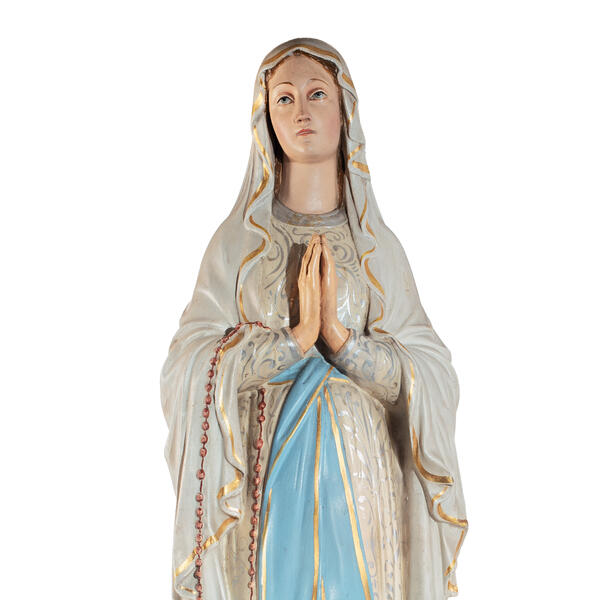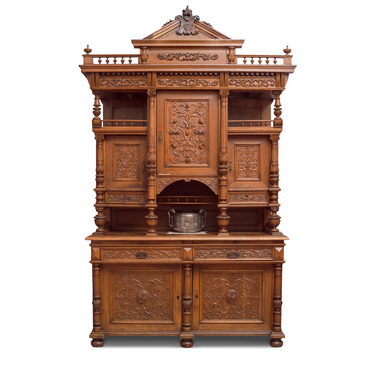The statue of Our Lady of Lourdes was created in the second half of the 19th century. She is depicted wearing a white robe, with Her hands folded in prayer, and roses placed at Her bare feet. This image is widely recognized in Western Christianity.
The story of Our Lady of Lourdes is associated with the popular Catholic legend about the 14-year-old girl named Bernadette Soubirous who lived near the town of Lourdes in France. The Virgin Mary appeared to Bernadette 18 times. During one of the apparitions, She instructed the girl to drink water from a spring and wash her face with it.
Several years later, in 1864, a statue of the Virgin Mary was placed in the grotto where the spring was located. The construction of a religious center also began nearby. The Upper Basilica was consecrated in 1876. Bernadette Soubirous took monastic vows. She died at the age of 35 in 1879. Later, she was canonized. Her life and the miraculous apparitions attracted the attention of famous writers, including Émile Zola.
The statue from the museum collection is associated with the presence of the Catholic Church in the multinational city of Taganrog. In the early 19th century, people of different religions lived there, including Catholics. In 1806, the mayor, Baron Balthasar von Campenhausen, requested permission from Emperor Alexander I for the construction of a Roman Catholic church. Due to the small number of Catholics, the emperor decided to fund the construction from the state treasury without collecting money from the local population.
The Catholic Church of the Holy Trinity was consecrated in 1812. This was also when the first services were held. Among the parishioners of the church were Italians, Belgians, Poles, and Lithuanians. In the 1820s, around 30–40 people attended the church. However, by 1865, there were already about 300 Catholics in the city of Taganrog.
The façade of the building was decorated with a small tower and a cross. Above the central entrance, there was an inscription in Latin, “Ex tuis bonis tibi offerimus” (We bring You gifts from Your own gifts). During the Soviet period, in 1923, the Catholic Church was closed. The building was rented out to a cotton workshop. Before the Great Patriotic War, it was converted into a children’s library.


